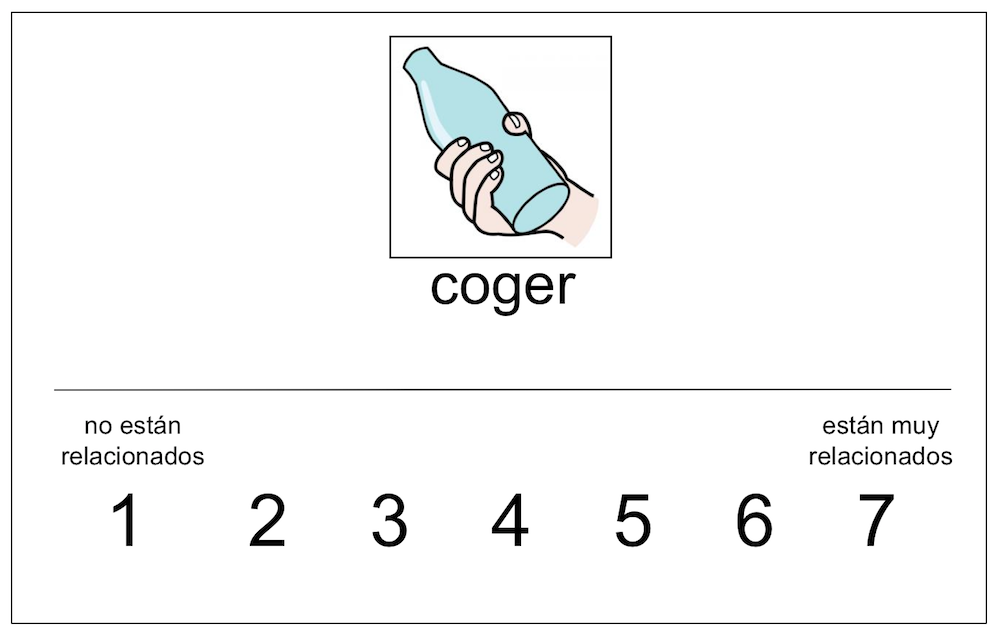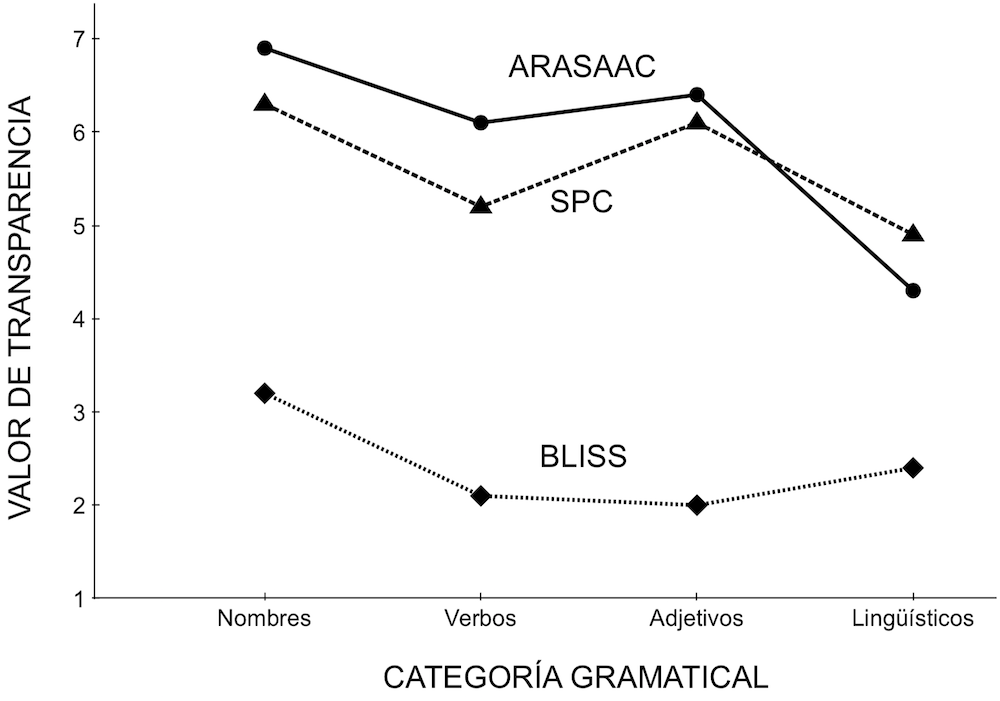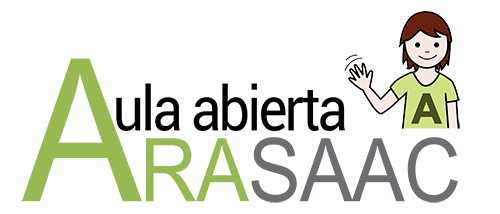Authors: Francisco Cabello Luque
Elisabetta Bertola López
Faculty of Psychology, University of Murcia
Bibliographic information
Formal characteristics and transparency of ARASAAC pictographic symbols
CABELLO, F., BERTOLA, E.. Formal characteristics and transparency of ARASAAC pictographic symbols. Journal of Speech Therapy Research,North America, 5, January. 2018.
Available in: http://revistas.ucm.es/index.php/RLOG/article/view/58620
Summary
The iconicity and transparency of the ARASAAC pictographic symbols are examined, and compared with that of other sets of already established signs (SPC and Bliss). 34 university students participated, exposed to a task in which 114 symbols corresponding to four grammatical categories (nouns, verbs, adjectives and linguistic symbols) were presented and their relationship with meaning was valued using a 7-point scale. The results show that ARASAAC pictograms have an adequate degree of transparency and iconicity, even greater than that of SPC pictograms, although there are significant variations depending on the grammatical category.
Introduction
When examining the characteristics of a set of pictograms, various criteria have been proposed in the scientific literature such as realism, ambiguity or efficiency. But without a doubt, the most relevant is the so-called “iconicity”, which consists of the degree of relationship that an individual makes between a symbol and its referent. To fulfill their communicative function well, pictograms should have a high iconicity so that the non-vocal sign and the meaning maintain an obvious relationship.
This work is the first to study the iconicity and transparency properties of ARASAAC symbols. It is a preliminary and exploratory work that, although it is part of the doctoral thesis “Empirical analysis of the formal characteristics of ARASAAC pictographic symbols”, was published independently.
Participants and experimental task
This study involved 34 undergraduates, who completed an assignment based on the previous study by Bloomberg, Karland and Lloyd (1990). As stimuli, words corresponding to three sets of pictograms (ARASAAC, SPC and Bliss) and also to four grammatical categories (nouns, verbs, adjectives and linguistic elements) were selected. The pictograms were presented on the computer screen along with their meaning and a rating scale from 1 to 7.
The task of the participants was always to click with the mouse of a computer on the pictogram that corresponded to the word that was displayed.

Participants had to select the score on the scale that best reflected the relationship between symbol and meaning. A score of 1 meant that the pictogram and its meaning were not related at all, while conversely a score of 7 represented a close relationship between the two.
Results
The results are presented in a graph showing the mean of the iconicity ratings (from 1 to 7) for each of the three sets of pictograms and the four grammatical categories.

ARASAAC symbols earned the highest iconicity ratings. Thus, they were significantly more transparent than those of SPC in the categories of nouns, verbs and adjectives, but not in that of linguistic symbols. Bliss symbols showed the worst transparency ratings in all categories.
Conclusions
Although it is an initial and practically pilot study, the first data are collected that indicated that the pictograms of ARASAAC have an adequate degree of iconicity, and that their meaning is even clearer than that of the SPC symbols, which in most classical studies had always appeared as the most transparent.
However, the type of task based on the use of a Likert scale to assess the degree of transparency was quite complicated, especially thinking about applying it in children with developmental problems. Therefore, for future studies it was clear the need to use other procedures in which different similar symbols are chosen directly.











